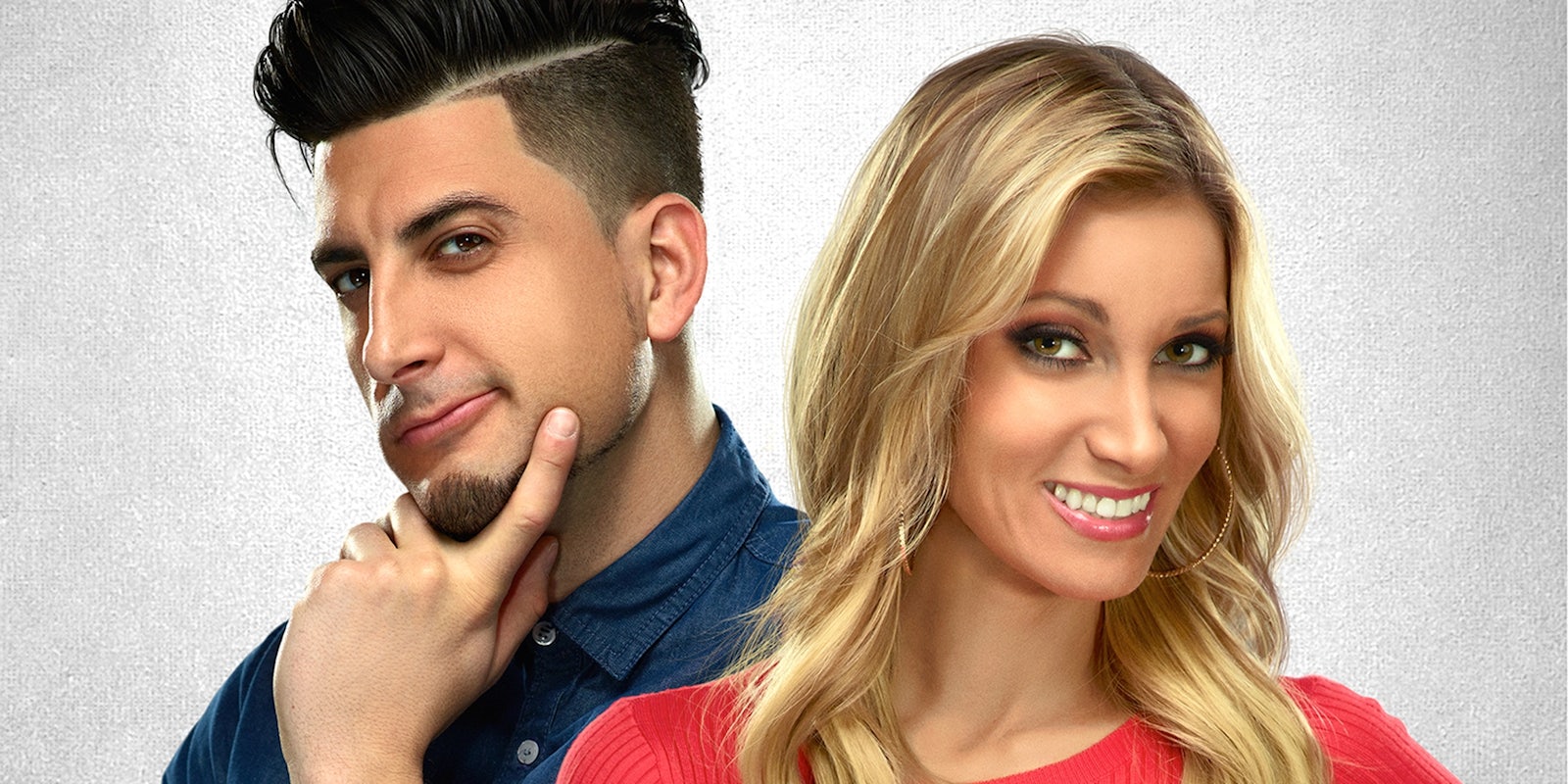In an era where YouTubers are often itching to make the jump from digital to mainstream, the couple behind YouTube’s 9.7 million subscriber strong PranksVsPrank channel has said no to every offer to be on TV.
“We just weren’t interested in it,” explained co-founder Jesse Wellens. “We just really love the Internet, and I just felt like if we did TV, we’d lose touch with the Internet. Reality TV always edits you to look the way you’re not, and you don’t really have as much freedom and control.”
Then, along came YouTube Red, the platform’s foray into big-budget, subscription-supported projects from its biggest stars.
“YouTube was on our side; they believe in us,” said the other half of PrankVsPrank, Jeana Smith. “They wanted it to be our vision. They trusted us, and we trust YouTube the most of any other opportunity that has come our way.”
So instead of jumping ship for the airwaves, the duo, who also run the 8.6 million-subscriber vlog channel BFvsGF, are staying with their homebase for their first series: Prank Academy premiered March 30 on Red. Over 18 episodes they’ll teach celebrities and fellow YouTubers how to execute their own over-the-top pranks.
“We give everybody objectives,” explained Wellens. “To pass the Prank Academy, you have to pass these objectives. For iJustine, she had to sell the fact that she was doing a real cooking show to Joey Graceffa. Then she had to blame the situation that happened on Joey.”
Wellens said getting big-name stars like iJustine or Graceffa to participate was easy for them after years as part of the YouTube community. With just a few phone calls, they were able to involve more YouTubers in a single series than most other current Red projects, a fact they think YouTube appreciated. Their YouTuber friends, however, were wary of participating—at least in part.
“Almost everybody that was on the show who we were teaching how to prank, they all had a suspicion we were going to do something to them,” laughed Smith, noting that no one got auxilary pranked in the process. It was all business—just teaching their friends how to prank.
The experience was all about learning for everyone involved in the process, really. Smith and Wellens say working with a production company was an eye-opening experience.
“It was hard for us to let go,” Wellens said. “For the entire show, I was in the editing bay. That was supposed to be [production’s] responsibility, but I was like, ‘I have to be there.’ It was a big learning experience.”
Meanwhile, the production team behind Prank Academy got to learn what it’s like to work with the new breed of digital talent.
“[The production company does] traditional TV all the time, so this was a new experience for them,” he said. “Jeana and I were the network and were the talent. It was a really weird experience for them.”
The process wasn’t wrinkle-free, and while they didn’t want to spoil aspects of the show by revealing the toughest participants or who walked off and gave up, they did reveal that the pranks didn’t always work.
“That’s what happens in the real world,” said Wellens. “You get one shot at it.”
The reality of their pranks is important in an environment that has swamped the platform with pranking channels, which are often associated with bad and sometimes illegal behavior.
“We are one of the original channels that’s dedicated to pranking on YouTube,” said Wellens. “The genre, within the last two years, has kind of exploded. It’s gotten watered down and stupid, with these guys doing ignorant things to people just to get a reaction. We just want to continue to make funny pranks and to try and change the game—”
“You can’t go out in the public and always get a crazy reaction, because people don’t always react like that.”
“Not change it, but continue doing what we were doing,” interjected Smith. “To let people know you can’t go out in the public and always get a crazy reaction, because people don’t always react like that.”
With the explosion of prank content, there’s also been an influx of faked pranks that rake in high view counts, some admittedly staged. Wellens takes issues with the frauds.
“Ninety percent of the pranks on the Internet are definitely fake,” he said. “If you’re older you can tell that it’s fake, but the kids love it and they’re naive. When people watch Prank Academy that are a little more mature, they’ll go, ‘oh that’s actually real.’ I’m hoping that stamps us as the YouTube channel out there doing the real stuff. We didn’t want to get caught into that world.”
They’ve also tried to get more creative, with videos like a recent 360-degree Aladdin-inspired magic carpet ride through San Francisco which relied more on the WTF nature of the moment and interactions with cars and pedestrian than a traditional prank setup.
“That’s the kind of content I’d love to graduate to,” said Wellens.
Prank Academy is their attempt to reclaim the word prank and reassociate it with a craft, not a quick grab for views. But if their 9.7 million fans show up with a YouTube Red subscription and stream to their hearts’ content, all the better.
Photo via Prank Academy (Used with permission)


